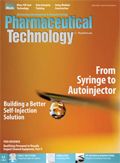Improving Pharma Systems with Process Analytical Technology
Pharmaceutical Technology spoke with Melissa Topp, director of Global Marketing at ICONICS, about the latest in process analytical technology (PAT).
Pharmaceutical Technology spoke with Melissa Topp, director of Global Marketing at ICONICS, about the latest in process analytical technology (PAT).
Benefits and challenges of PATPharmTech: What are the benefits and challenges of PAT?
Topp (ICONICS): The key benefit to PAT is in providing users with the means to measure performance, productivity, and quality and thereby provide guidance toward improvement. However, in order to best guide decision-making, as many factors (or data points) as possible need to be included for analysis. A challenge for PAT going forward, as more companies seek to move their production data to the cloud, is ensuring that any increase in the complexity of process measurement can be visualized, stored, and analyzed as quickly and cost-effectively as possible, using the right combination of hardware and software.
Improving system quality
PharmTech:
How can PAT be used to improve system productivity and quality?
Topp (ICONICS): A comprehensive PAT strategy can include both productivity and quality analyses. Solutions like ICONICS Productivity Analytics help establish manufacturing context with knowledge point indicatiors (KPIs) such as overall equipment effectiveness (OEE), cycle time, mean time between failures (MTBF), Takt time, efficiency, and throughput. Quality AnalytiX provides real-time statistical process control (SPC) that can guide users towards increased production yields, reduced scrap, and variation prevention.
PAT and tech transferPharmTech: How can PAT be used in tech transfer of pharmaceutical manufacturing operations?
Topp (ICONICS): Any solution that helps users capture, store, and analyze their data is a valuable application of process analytical technology. But true insight is only achieved when real-time data are visualized alongside retrieved historical benchmark production performance data. Quality analysis, including standard SPC calculations such as X-bar, R-bar, Sigma, moving range, Media, moving average, exponentially weighted moving-average (EWMA), process capability index (Cpk), and process performance index (Ppk), can work in tandem with a robust (one capable of over 100,000 tag per second logging) data historian. This stored comparative performance data can then be useful in tech transfer between organizations, facilities, departments, etc.
PAT innovationPharmTech: Are there any new and innovative PAT tools being used in the industry? What does the future hold?
Topp (ICONICS): One of the most exciting developments is the emergence of the Internet of Things (IoT) and cloud-based technology in production environments. The connection of production equipment (via low-cost bridging devices known as ‘gateways’) to large, external, Web-connected networks (e.g., Microsoft Azure, Amazon Web Services, etc.) via comprehensive software suites allows users to make a decision as to where the process analyses take place; either via on-premises IT hardware or in the cloud. Either choice has its benefits. The innovation lies in now being able to make that choice.
